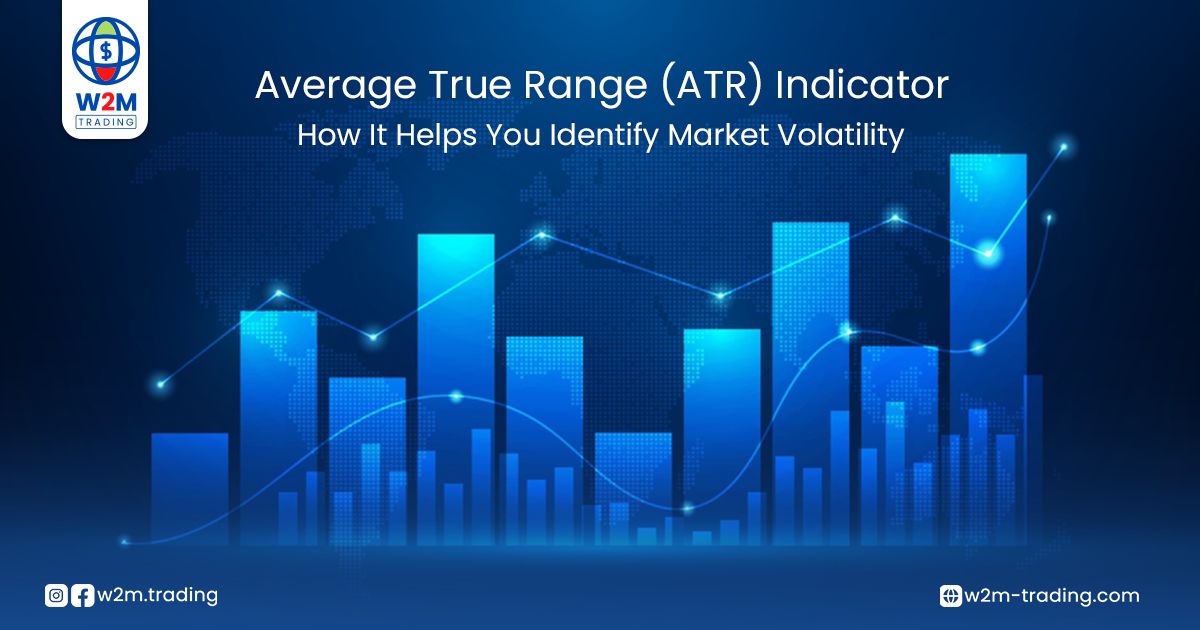- Attractive Education
- Beginner to Advance
- Flexible Timing

If you’re new to the world of trading, it’s essential to understand that financial markets are constantly volatile. This volatility can be overwhelming at first, but with the right indicators, you can spot the best opportunities that match your strategies. One of the most important indicators for this purpose is the Average True Range (ATR). In this article, we’ll explore what ATR is and how it can help you improve your trading decisions.
The Average True Range (ATR) is a tool used to measure market volatility. It analyzes price movement over a specific time period to give you a clear idea of how much the market has been moving. Simply put, ATR tells you the “degree of movement” in the market over a defined period, helping you gauge the level of risk in a trade.
When starting out in trading, market fluctuations can be intimidating. ATR is a great tool for beginners because it:
Helps you assess market volatility: If the market is highly volatile, risk is expected to be higher. If the movement is limited, the market may be relatively stable.
Guides you in setting entry and exit points: By understanding how much the market typically moves, you can set more strategic and realistic trade entries and exits.
Gives you a reference for stop-loss placement: Knowing the typical volatility helps you set stop-loss levels that align with natural market movement.
ATR is calculated using historical market data. Although the calculation might seem complex, most trading platforms provide it as a built-in tool. Here’s a simplified breakdown:
Step One: Calculate the True Range (TR) for each trading day. The TR is the greatest value among:
The difference between the day’s high and low
The difference between the previous day’s close and today’s high
The difference between the previous day’s close and today’s low
Step Two: Calculate the average of these true ranges over a set period (typically 14 days) to get the ATR value.
Here are several practical ways ATR can help enhance your trading strategy:
Setting Stop-Loss Levels: Beginners can use ATR to determine appropriate stop-loss distances. A higher ATR suggests a more volatile market, so the stop-loss should be wider. A lower ATR indicates less movement, allowing for tighter stops.
Determining Trade Size: ATR helps you assess how large your position should be. When volatility is high (ATR is large), you might want to reduce your trade size to manage risk.
Market Direction and Strategy: A rising ATR often signals increased volatility, which may lead to strong price movements and potential trend opportunities. A falling ATR may indicate consolidation or low momentum.
Suppose you’re watching a currency pair and you see that its 14-day ATR is 0.05. This means the pair’s average daily price change is 50 pips. If you plan to open a long (buy) position, you might set your stop-loss 50 pips below your entry to account for natural market fluctuations.
Using ATR as a standalone tool: ATR should not be your only trading indicator. Combine it with other tools for a more complete market view.
Ignoring market context: ATR only measures volatility. It does not consider news or sudden events that could significantly impact prices.
Placing stops too close: Setting your stop-loss too tight can lead to premature exits. Make sure to align your stop with the current ATR reading to allow room for normal market movement.
Start with a demo account: Practice using ATR in a risk-free environment to see how it fits into your strategy.
Focus on longer periods: An ATR calculated over a longer period (e.g., 30 days) may give you a better sense of long-term volatility.
Use in combination with other indicators: Combine ATR with tools like Moving Averages or the Relative Strength Index (RSI) for a well-rounded analysis.
This site is protected by reCAPTCHA and the Google
Privacy Policy and
Terms of Service apply.